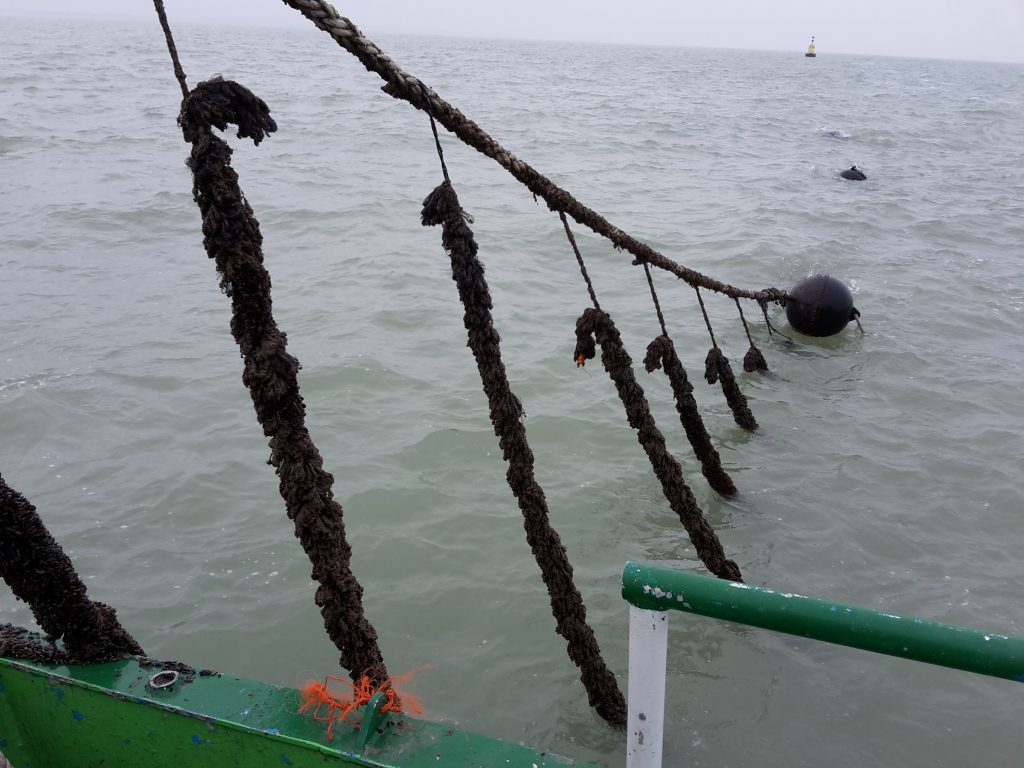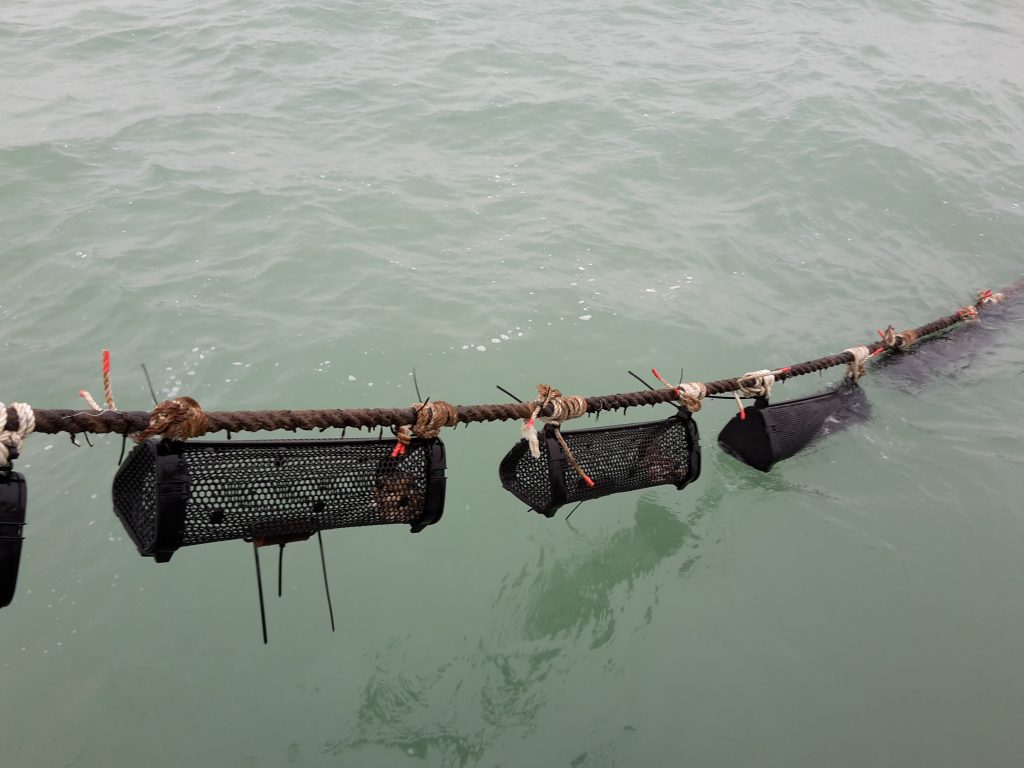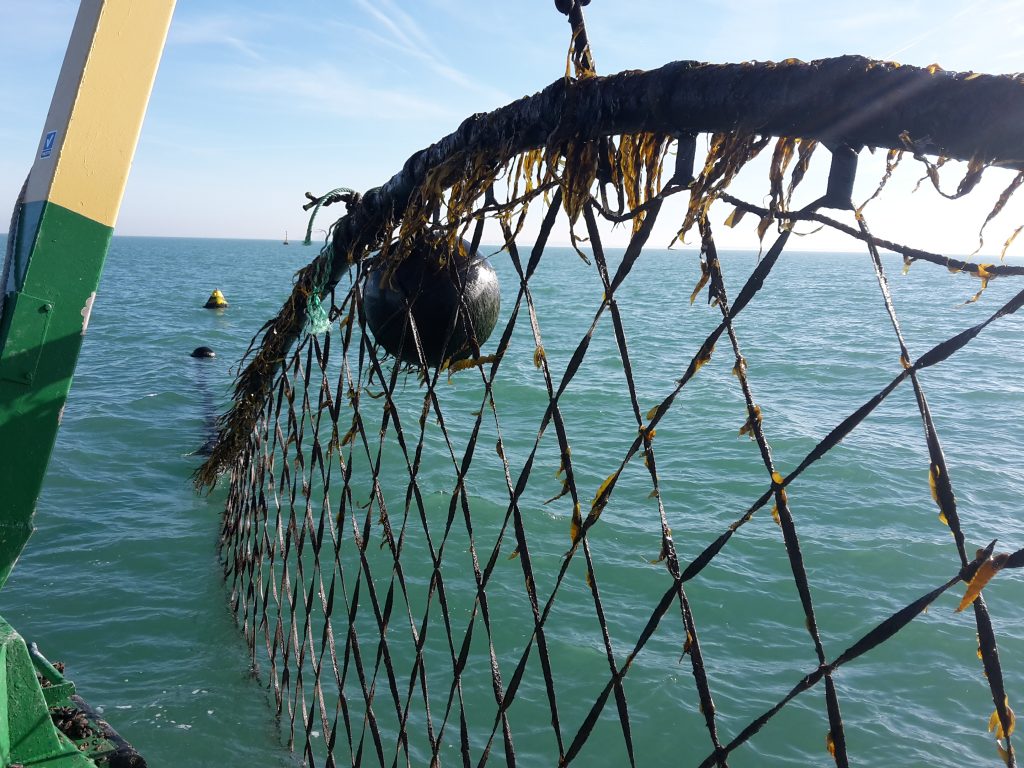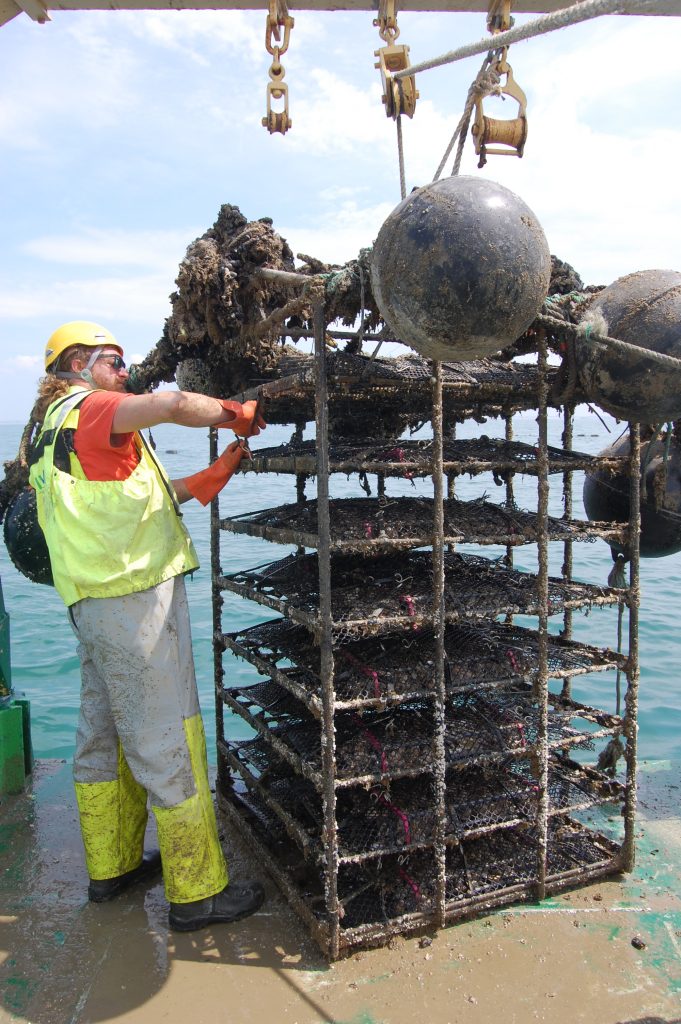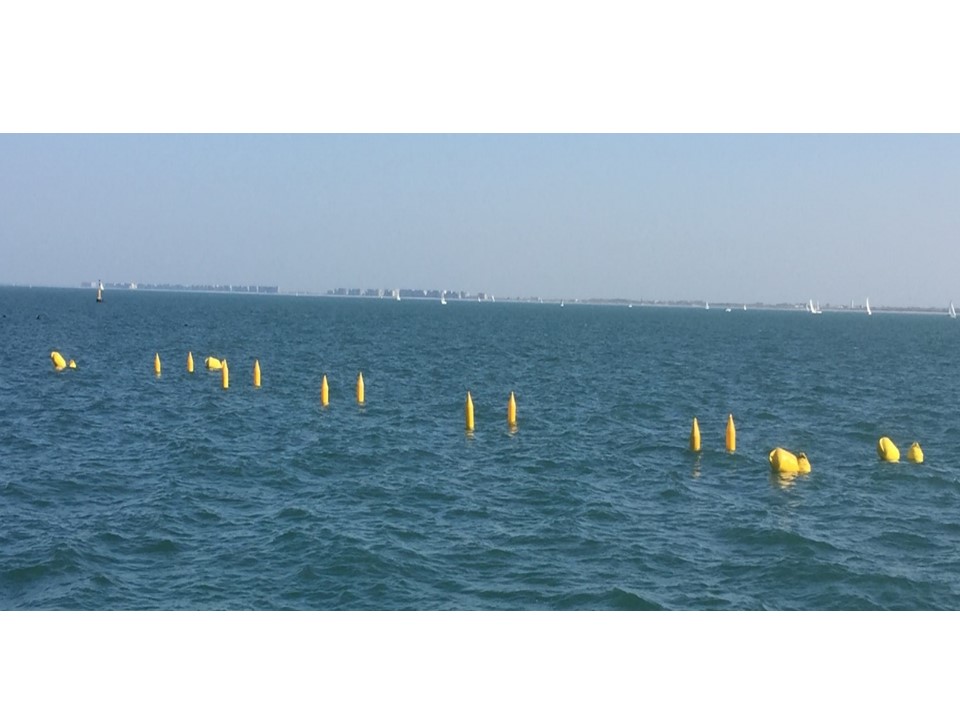The Belgian pilot “Westdiep” is based on an aquaculture installation located in a highly dynamic environment in the Belgian part of the North Sea. The current area is 700 x 500 m (3.5 ha) and located 5 km in front the port Nieuwpoort. It is a small-scale prototype comprised of one seaweed minifarm, two longlines for different species of shellfish and seaweed, and one mussel longline. In Spring 2020, four more longlines are placed to increase the test facilities. Next to aquaculture, the test location will be used for experimental passive fishing gears and oyster reef restoration. As Smart farming is a research line for the “Westdiep” location, it can serve in FORCOAST as a test case for the development of different prediction modules to be commercialized within this project.
The Belgian pilot site focuses on the existing site, but the products and services should be extended to the 5 zones foreseen for industrial and commercial activities in the revised Belgian Marine Spatial Plan. These are located in open sea (i.e. unsheltered areas) but still in the Belgian shallow territorial waters offshore the harbor cities of Nieuwpoort, Ostend and Zeebrugge. The bathymetry is less than 30 m depth. The hydrodynamics in this area are mainly tide dominated with peak currents up to 1.7 m/s in spring tide. Significant waves height is usually less than 2m and rarely exceeds 5m in storm conditions. Zero-up crossing waves period are usually in the range 2-8s. The Belgian territorial waters are very turbid areas with a maximal turbidity off Zeebrugge port. The Belgian waters have a rich nutrients content leading to eutrophication issues and phaeocystis blooms.
Several parameters are measured on site (e.g. temperature, salinity, turbidity and Chlorophyll a) in order to develop a growth model for sugar seaweed, mussel and flat oyster. These data are used to validate the results of the data from remote sensing. The model, incorporating monitoring data from measuring buoys in the Belgian part of the North Sea and satellite data (for example chlorophyll-a and other pigments) would serve as an early warning system for seeding, maintenance, harvesting. Furthermore, data on currents and temperature could provide insight in the prevalence of oyster spat in the Belgian part of the North Sea, in order to capture the spat for further growth. The following tasks are included within the framework of the Belgian pilot:
- Upgrade the river discharge forcing used by its forecast model OPTOS
- Using MIRO&CO results for estimating primary production and nutrients cycle
- Further developing the LARVAE&CO model to suit aquaculture needs
- To develop services to forecast the optimal timing, water quality, risk of a site to be affected by river plumes, etc.


